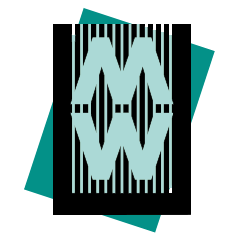GLAMi nomination: Code the collection
institution: Samsung Digital Discovery Centre at the British Museum
category: Education Program
https://www.microbit.co.uk/british-museum
Background
The Samsung Digital Discovery Centre (SDDC) was created in 2009 to provide a state-of-the-art technological hub for children and young people to learn about and interact with the Museum’s collection. Offering the most ambitious and extensive on-site digital learning programme of any UK museum, the SDDC runs thirteen different school programmes throughout the school year, and has family programmes operating fifty two weekends a year. All activities are free and over 60,000 children and families have been welcomed to the Centre since it opened. Through its work with Samsung the British Museum remains at the forefront of digital learning.
In 2016, the ‘Code the collection’ project sought to introduce computer programming skills into the SDDC’s schools and young audiences offer through a phased pilot approach.
First phase
Development and delivery of a season of weekend sessions taking place in July and August 2016. Sessions included the Museum’s first use of the BBC micro:bit – a pocket sized codeable computer. 4 unique sessions were developed by the project team:
- Code the collection: from hieroglyphs to emojis
- Code the collection: LED badges
- Code the collection: lucky charms
- Code the collection: digital compass
These sessions incorporated:
| A range of Museum collection focuses: | A variety of session styles: |
| · The Rosetta Stone
· Room 47: Europe 1800-1900 · Room 1 : Enlightenment · Room 11: Greece: Cycladic Islands |
· Drop in
· 2 hour workshop
|
| Different themes : | An assortment of key coding skills : |
| · History of language
· Symbols in brooches and medals · Religion and ritual charms · Navigation and trade |
· Repetition
· Selection · Variables · Input |
First phase evaluation
Highlights of the feedback have been included below:
- In response to ‘Have you used the BBC micro:bit before today’s session?’, 91% answered ‘No’. Visitors were unaware of the micro:bit – the SDDC session was their first experience of it.
- In answer to ‘Have you done any coding before today’s session?’, 45% of participants responded ‘Yes’, giving either school (55%) or home and school (27%) as their previous location.
- The approval rating for the sessions was very high, with 75% of respondents citing them as ‘Very good’ and the remainder ‘Good’.
- In response to the statement ‘The best thing about today was…’, participants identified –
“Learning coding was not too difficult.” “It was satisfying to see the micro:bit carry out the programme.” “Seeing the link between technology and history.” “Being able to program our very own BBC micro:bit.”
In relation to the project aims, the project was evaluated as follows:
- How the technology could be used to support visitors to engage with the collection
Many families remarked how keen they were to visit the objects in the galleries, and were excited to have learnt new facts about the objects within the sessions.
- How our family and teen audiences worked with the technology
Drop in sessions welcomed a much broader family demographic of 6-14 years accompanied by adults who enjoyed the activities. Younger participants were able to engage with the activities with support; while older participant enjoyed the extra open challenges developed into the activity.
Second phase
Based on the success of the initial pilot weekend season, the SDDC team moved forward with plans to incorporate computer programming skills and micro:bit technology into the core SDDC school and weekend offer. 3 audience areas were chosen:
- Teens – offering the original sessions via ongoing weekend workshops
- Families – offering drop in weekend sessions with redeveloped resources
- Key Stage 2 (age 7-11) Schools – redeveloping ‘from hieroglyphs to emojis’ resource into a formal school offer.
Second phase evaluation
Feedback was requested from teachers attending the Key Stage 2 school session pilots. They noted the sessions as being “Interactive and engaging”. “Cross curricular link between coding and Egyptians”. “Very good- well pitched for age of children”.
Impact
The Code the collection project has:
- seen the British Museum become one of the first heritage institutions in the UK to incorporate computer programming into its offer.
- kept the Museum Collection as a core focus whilst making links to modern concepts and practices.
- supported families and teachers to approach computer programming elements of the National Curriculum in an novel way – intertwining history with computing to enable cross curricular learning.
- 384 visitors engaged with programming sessions at the Museum in the pilot phases across 4 days of weekend session and 5 key stage 2 pilots.
- In addition, the 4 activity booklets created for the initial pilots have been uploaded onto the BBC’s micro:bit website (https://www.microbit.co.uk/british-museum). The activities can now be engaged with and enjoyed by countless users nationally and internationally.
